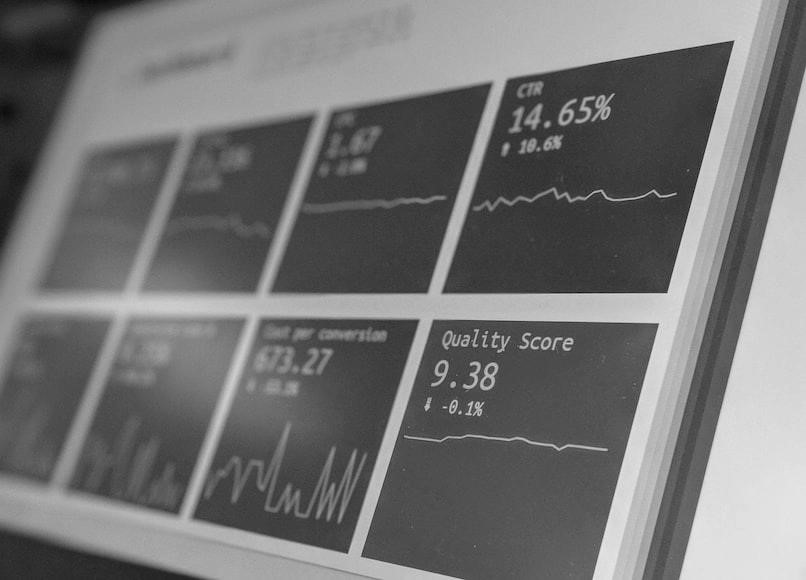Data collection and analysis are continuous and crucial processes in today’s data-driven economy.
However, it seems impossible to make wise business choices based on just statistics. Making intelligent business decisions relies on communicating insights from data in a way that is understood and easy to implement.
Data storytelling aims to present a business tale with numerical evidence that will interest and persuade its audience.
Therefore, this blog post will provide a step-by-step guide to compelling data storytelling, from defining the purpose of your data story to crafting a persuasive narrative.
Understanding Data Storytelling

Image credit: Unsplash
Data storytelling entails using data to tell your business story while conveying insights to a target audience. It is an excellent tool for businesses to show data in a form that is readily accessible, clear, and feasible to implement.
By integrating data analysis and narrative components, data storytelling helps you to pass complex business information in a less intimidating and appealing manner.
For instance, The TED Talk “Hans Rosling’s 200 Countries, 200 Years, 4 Minutes” exemplifies effective data storytelling.
In this session, Rosling utilizes data visualization to tell a tale about the evolution of global health and wealth through time.
He skillfully presents complex data in an informative and entertaining manner using engaging images and stories.
Step-by-Step Guide to Effective Data Storytelling

Image credit: Unsplash
Whether you’re a data analyst or a business owner, effective data storytelling is a must-have skill for anyone who works with data.
Below is a step-by-step guide to data storytelling success:
Step 1: Define the Purpose of Your Data Story
Having a clear path of the purpose of your data before diving into data analysis is a critical requirement. This entails identifying the specific problem or question your data attempts to answer.
By defining a clear purpose, you can make your data story more focused and impactful.
Here are some pointers to help you define the purpose of your data story:
- Decide on your target audience for your data story.
- Decide the main point you want to convey.
- Consider what you want your audience to do after seeing your data story.
Step 2: Gather and Clean Your Data
The quality of your data will strongly impact your ability to tell a compelling data story. Therefore, it is essential to guarantee that your data are always correct, pertinent, and well-organized.
This requires locating the appropriate data sources, cleaning and processing the data, and validating the data to guarantee accuracy.
Some helpful ideas for compiling and organizing your data:
- Employ credible sources for your data.
- Check to see that all of your data is accurate and up to date.
- Delete any data points that are anomalous or include errors.
Step 3: Analyze Your Data
With data free of junk and outliers, analysis is the next line of action. Finding the trends, patterns, and insights pertinent to your mission is part of analyzing your data.
Some helpful hints for analyzing your data:
- Employ data visualization to detect patterns and trends.
- Consider using a variety of statistical methods to study your data.
- Search for anomalies and outliers in your data.
Step 4: Choose a Data Storytelling Method
Data storytelling can take many forms, including visualization, infographics, and narratives. The method you use will rely on your target audience, the type of data you have, and the purpose of your data story.
Data visualization is the best method for displaying trends over time. An infographic may be a suitable option for presenting a large amount of data concisely and visually appealingly.
Furthermore, a narrative may be the best way to tell a story about how your product or service has helped your customers achieve their goals.
Consider the following when selecting a data storytelling method:
- Analyze the pros and cons of each technique.
- Select a strategy that is appropriate for your goal and audience.
- To reinforce your message, employ multiple methods of storytelling data representation techniques.
Step 5: Craft Your Story
After you’ve analyzed your data and decided on a storytelling method, it’s time to write your story. This entails structuring your data story, choosing the most valuable insights, and developing a narrative that engages your target audience.
Suggestions for writing your data story:
- For your data story, use a clear and compelling story structure.
- Employ simple language.
- Concentrate on the most critical points and avoid overloading your audience with information.
Best Practices for Effective Data Storytelling

Image credit: Unsplash
While following the stepwise approach is essential for effective data storytelling, several best practices can enhance the impact of your data story.
Here are some additional pointers to remember:
Use Simple Language
Use jargon and technical terms sparingly to avoid confusing your audience. Rather, go for simple language and convey your ideas clearly and concisely.
Consider Your Audience’s Requirements!
Assess what your target audience expects to learn from your data story and tailor your message accordingly. This will assist you in developing a more engaging and relevant story that will resonate with your audience.
Make Use of Data Visualization
Visualizing your data can help your audience understand and interpret your findings. Use charts, graphs, and other visual aids to help you tell your story.
Contextualize your Data!
Contextualizing your data can help your audience understand your insights and why they are essential. This could include historical information, industry benchmarks, or other pertinent information.
Use Narratives
While data is at the heart of your story, storytelling techniques can help make it more engaging and memorable. To bring your tale to life, consider using a narrative structure, creating tension, or incorporating emotions.
Apply Data Journalism Ethics
Data journalism, like traditional journalism, should adhere to ethical criteria such as accuracy, transparency, and fairness. Clear your data sources, practices, and impediments, and strive for precision in your reporting.
By implementing these best practices into your data storytelling, you can make a story that is insightful, stimulating, and actionable.
To Sum Up
Data storytelling is a powerful tool for businesses looking to turn data into insights.
You can craft compelling stories that effectively communicate your insights and resonate with your audience by following a step-by-step guide and incorporating the best.
Each step in the process, from defining the purpose of your data story to selecting the best storytelling method and crafting a compelling story, is critical to creating an effective data story.
Finally, by upholding your target audience in mind and utilizing best practices like data visualization, data interpretation, and storytelling strategies, you can take your data storytelling to the next level.
Summary
From defining the purpose to crafting a persuasive narrative, effective data storytelling entails utilizing data to tell your business story while conveying insights to a target audience.

